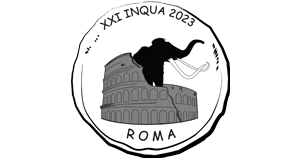Carissimi Soci SGI,
Carissimi Soci Società Associate,
su indicazione della Prof.ssa Daniela Ruberti (Università degli Studi della Campania), vi segnaliamo la call for abstract relativa alla sessione "The role of Holocene architecture in driving land subsidence and saltwater intrusion in deltas, estuaries, lagoons and coastal plains", organizzata nell'ambito del XXI INQUA congress - Time for change (https://inquaroma2023.org/).
Cordiali saluti,
La Segreteria
We kindly invite you to submit an abstract to the session:
Session 132:The role of Holocene architecture in driving land subsidence and saltwater intrusion in deltas, estuaries, lagoons and coastal plains
(Scientific theme: 1E: short to long-term environmental changes)
to be held at 21°INQUA Congress in Rome (Italy) from the 14th to the 20th of July 2023.
Abstract:
Sea-level rise seriously jeopardizes many low-lying coastal plains threatening high valuable transitional environments such as deltas, estuaries, and lagoons as well as compromising the economy of society, for example, that related to farming and tourism. Holocene estuaries, deltas, lagoons and associated coastal plains are formed by complex subsurface architectures inherited from the evolutionary dynamics of transitional environments in a sea level rise context.
Holocene coastal deposits, due to their geo-mechanical and hydro-stratigraphic characteristics, have a fundamental role in driving land subsidence and saltwater intrusion. Land subsidence rates, which reflect regional and local tectonic effects, can be greatly enhanced by primary consolidation and creep of the Holocene deposits, thus resulting in an additional vertical movement at the ground surface.
Holocene coastal aquifers, groundwater reserves, and continental-sea groundwater exchanges depend on hydro-stratigraphic setting, which in turn reflects the evolution of depositional environments during marine transgression.
This session aims to explore the role of the architecture of Holocene deposits in deltas, estuaries, lagoons and coastal plains in controlling and driving land subsidence and saltwater intrusion by taking into account a variety of independent factors. The focus is on the sedimentary architecture and the related geotechnical and hydrological characteristics.
We encourage studies addressing a wide range of spatial and temporal scales and applying state of the art methodologies. Interdisciplinary studies are strongly encouraged as they provide the basis for a sustainable management.
Relevant INQUA Commission: CMP-Coastal and Marine Processes
The abstract submission deadline is 1th November 2022. Please consider submitting an abstract, and contribute to the success of this session.
The contribution submitted to this section of the INQUA conference could be collected in a Research Topic of Frontiers in Earth Sciences. Please send an expression of interest with a title, author list with affiliations and an abstract of your proposed manuscript to the guest editors listed below by the 1st of November 2022.
The tentative list of papers will be submitted to Frontiers as a Research Topic proposal at the end of November.
We are looking forward to seeing you in Rome!
Best regards,
Daniela Ruberti, Dip. Ing, Università degli Studi della Campania Luigi Vanvitelli, Italy; daniela.ruberti@unicampania.it
Carla Buffardi,Dip. Ing, Università degli Studi della Campania Luigi Vanvitelli, Italy; carla.buffardi@unicampania.it
Pietro Teatini, UniPd-ICEA, Italy; pietro.teatini@unipd.it
Luigi Tosi, National Research Council – Institute of Geosciences and Earth Resources, Italy; luigi.tosi@igg.cnr.it
Philip S.J., Minderhoud, Wageningen University, Deltares, Netherlands; Philip.Minderhoud@wur.nl

